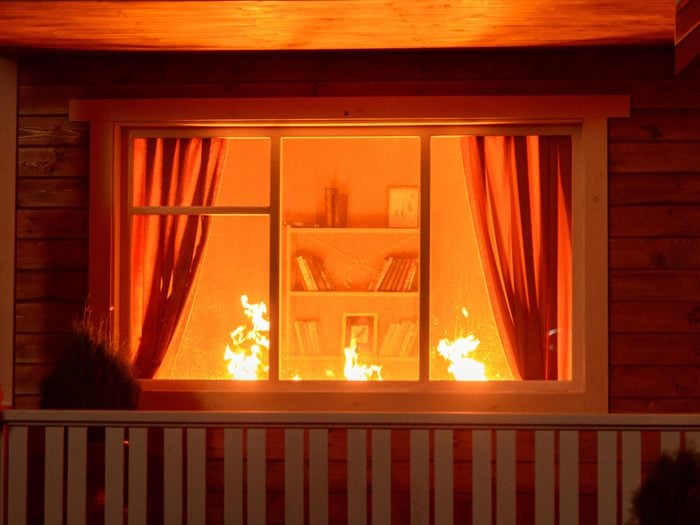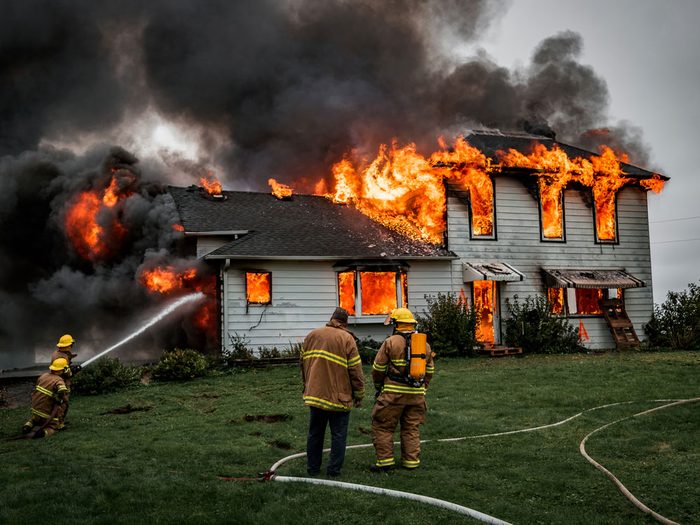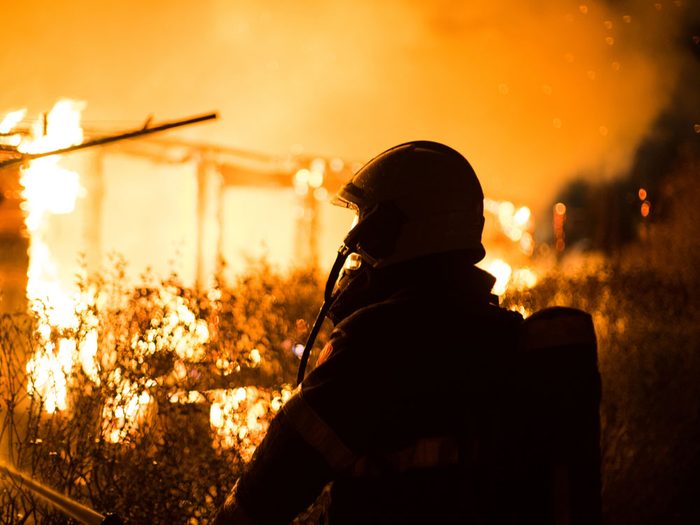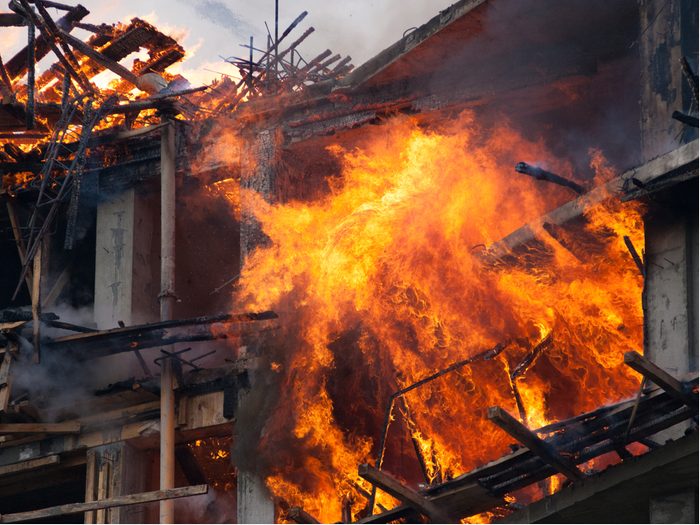
Myth 1: In a fire, flames cause the most casualties
Reality: Typically, it’s the smoke that injures or kills. In as little as three to five minutes, smoke can fill a house and create complete darkness, even during daylight. Thick smoke, full of toxic by-products (carbon monoxide and fumes from the materials used to make your furnishings), can quickly leave you choking, disoriented or unconscious.
Here are 10 things in your home that could explode without warning.

Myth 2: You have about five minutes to escape a house fire
Reality: Once a fire starts, get out immediately. A small flame can turn into a major fire in less than 30 seconds. A home fire can double in size every minute. In three minutes, a fire can burn so hot that it ignites everything at once (a flashover).

Myth 3: In a fire, the smell of smoke will alert you in time
Reality: Most fatal fires occur at night, when people are rarely awoken by smoke. Even if they are, fire and smoke have probably spread so far by then as to make escape difficult. A smoke alarm—on every floor and ideally outside every bedroom—is your best chance of early warning.
Don’t miss these other facts about house fires.

Myth 4: If firefighters haven’t arrived yet and someone is trapped inside, go back in to rescue them
Reality: If someone inside is in danger, you will be too if you re-enter a burning house or building—and you’ll make the firefighter’s job that much tougher. Once you’re out, stay out.

Myth 5: Less people die in residential fires than non-residential ones
Reality: Nearly 40 per cent of fires in Canada occur in the home. But these fires are responsible for nearly all fire-related fatalities (over 80 per cent) and an overwhelming number of injuries (over 70 per cent). That’s why it’s important to have not only smoke alarms but a home evacuation plan—and to practice it with everyone in your household.
Next, check out these five ways to winter-proof your house.